Abstract
Visual senescence symptoms and associated changes in constituent contents of three field-grown maize (Zea mays L.) hybrids (Pioneer brand 3382, B73 × Mo17, and Farm Service brand 854) were compared in response to ear removal. Whole plants were harvested at eight intervals during the grain-filling period, and analyzed for dry matter, total N and nitrate N, phosphorus, sugars, and starch.
Upper leaves of earless P3382 and B73 × Mo17 showed reddish discoloration by 25 days after anthesis (DAA) and all leaves had lost most of their chlorophyll by 40 DAA. In striking contrast, leaves of earless FS854 plants remained green and similar in appearance to eared controls throughout the grain-filling period.
For all hybrids, ear removal led to a decrease in dry weight, reduced N, total N, and phosphorus contents of the total plant, and an increase in carbohydrate content of the leaves and stalks, relative to respective controls. Although changes in carbohydrate and N contents, which previously had been associated with senescence, were observed for all earless hybrids, these changes were followed by accelerated senescence and early death only for P3382 and B73 × Mo17. By 30 DAA, earless P3382 and B73 × Mo17 plants ceased to accumulate dry weight, total N, and phosphorus, indicating a termination of major metabolic activities. In contrast, earless FS854 plants retained a portion of these metabolic activities until 58 DAA, indicating a role for roots in determining rate of senescence development. Thus, the course of senescence was more accurately reflected by measurements of metabolic activities than by measurements of metabolite contents at any given time. These results show that the ear per se does not dictate the rate or completion of the senescence process, and implicated an association between the continued accumulation of N and associated root activities with the delayed senescence pattern of the earless FS854 plants. It is evident that studies involving control of senescence among species must also consider genotypic influences within species.
Full text
PDF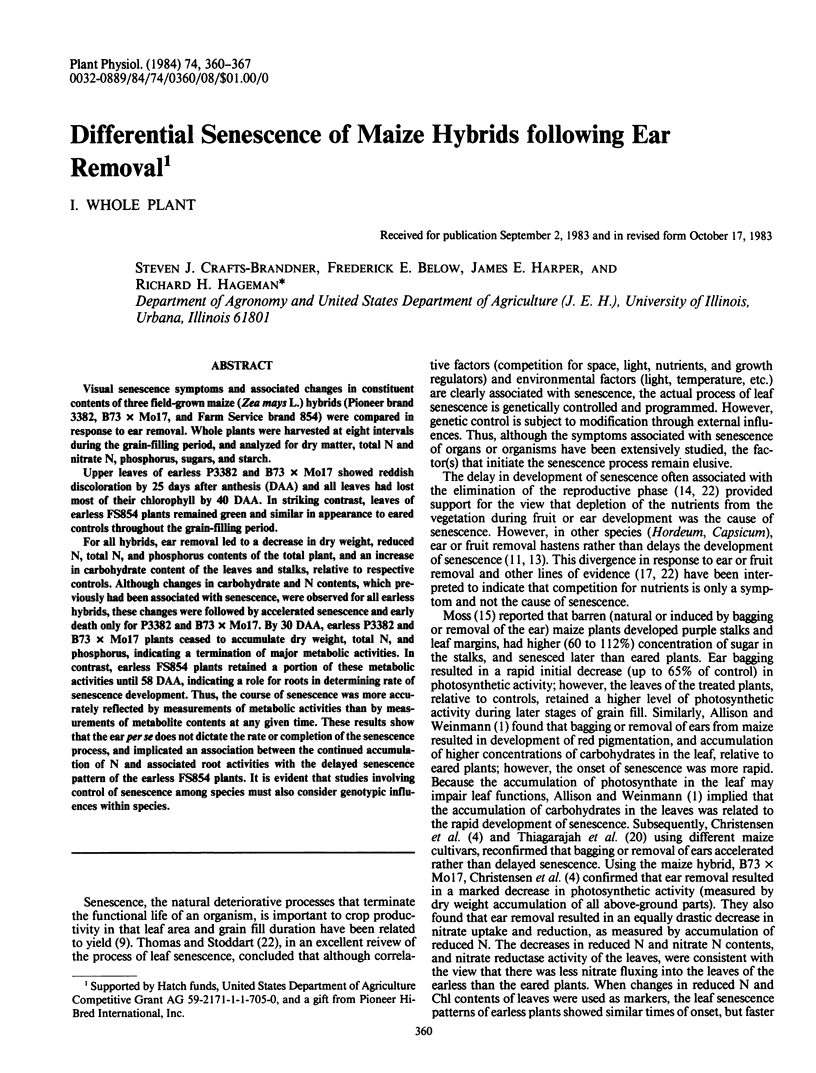
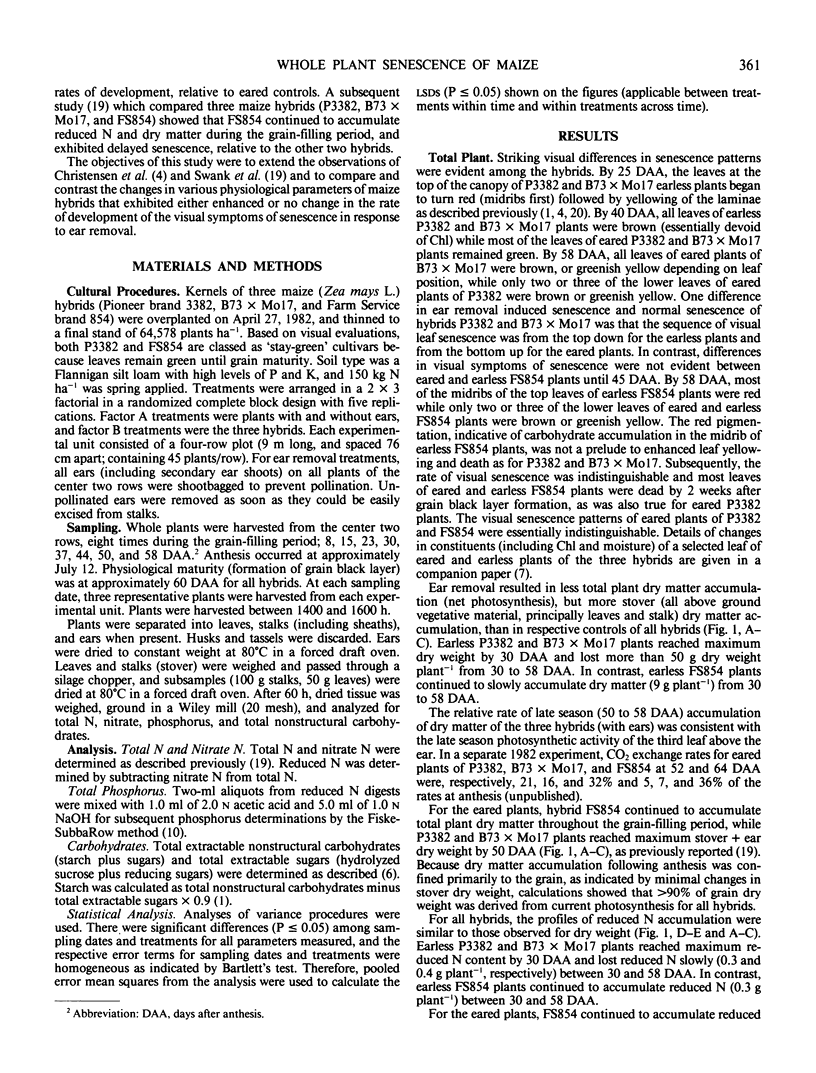
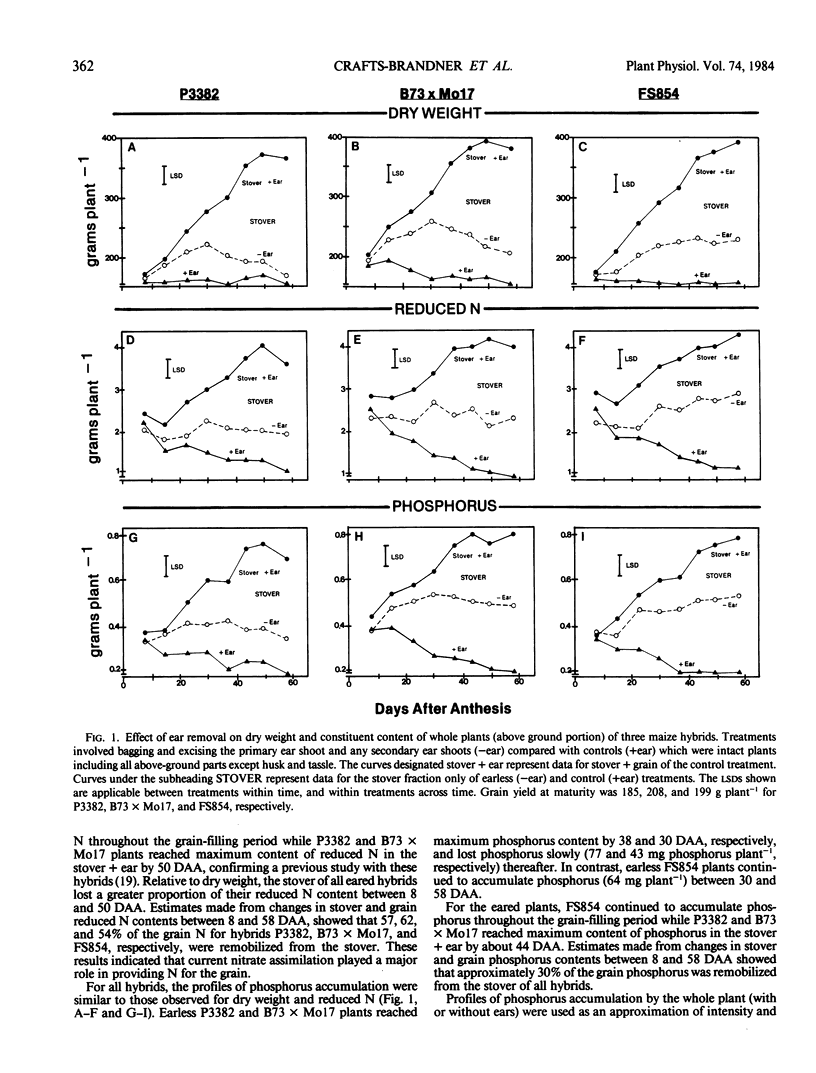
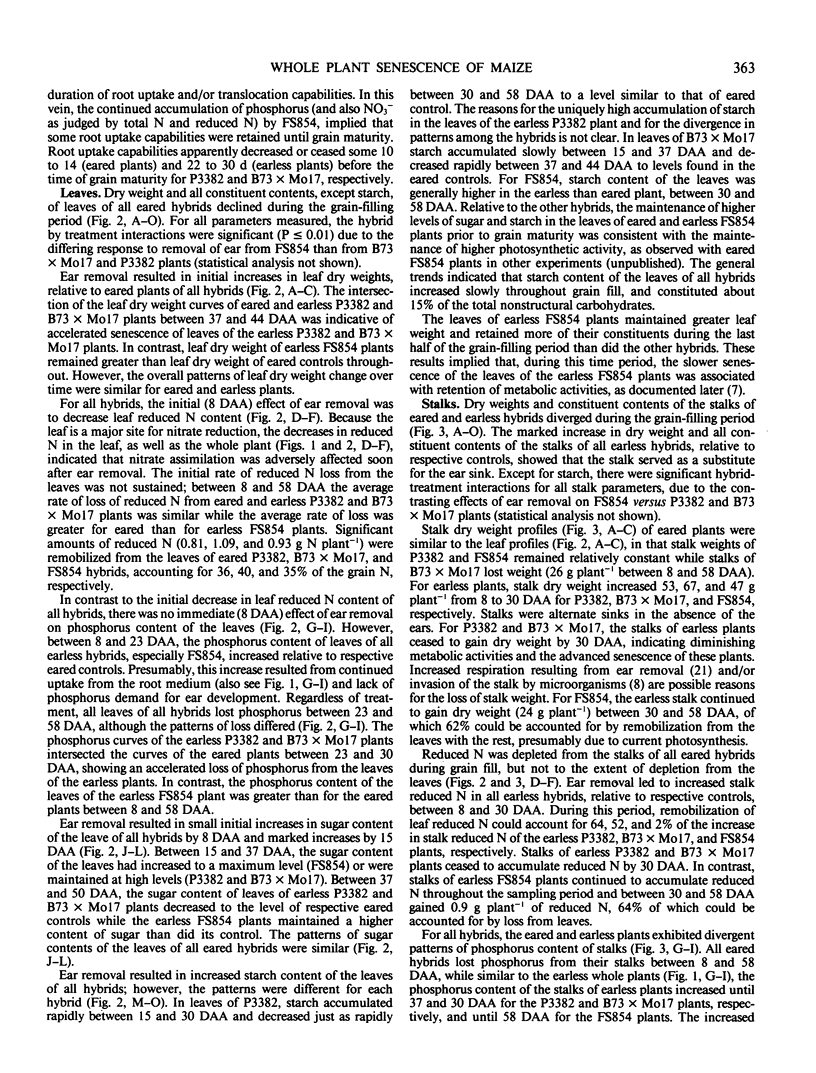
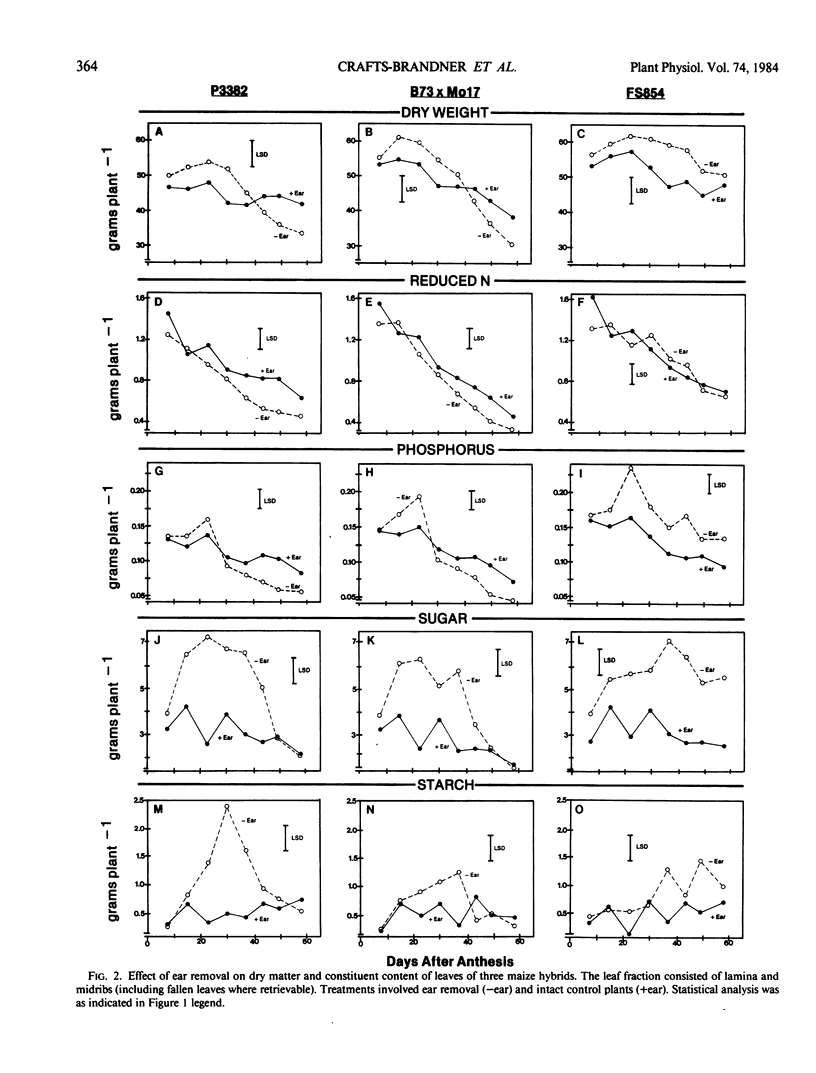
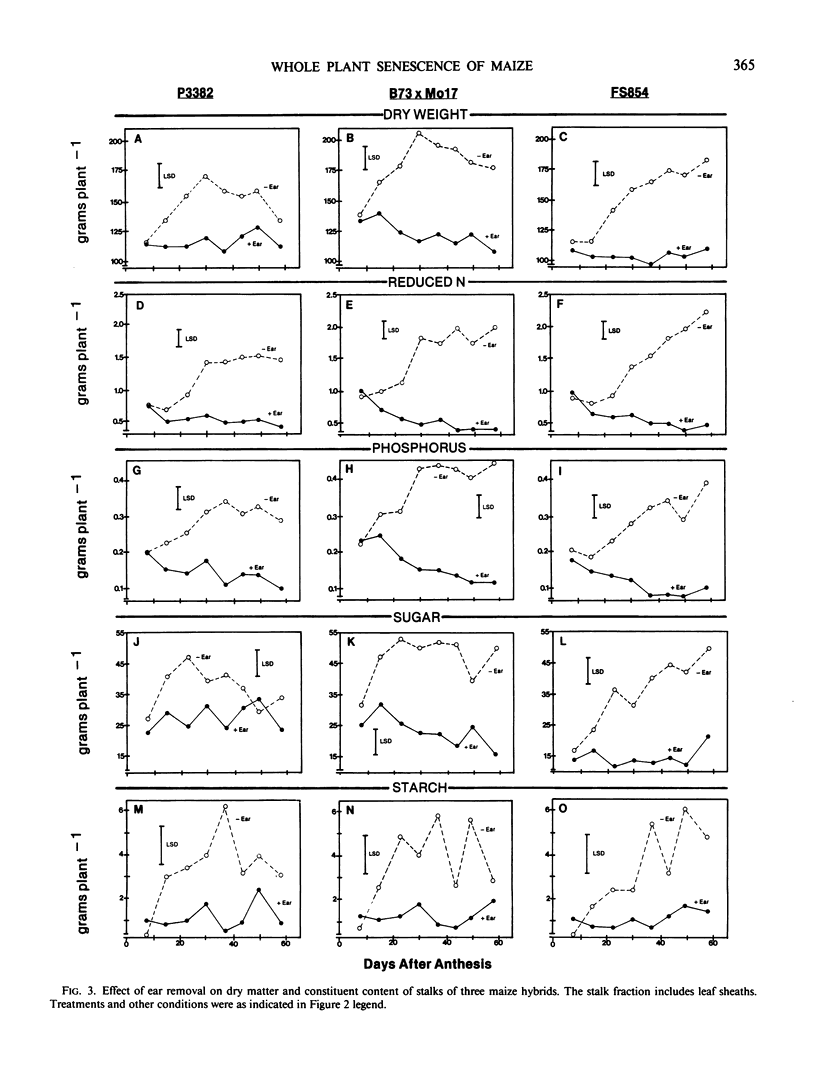
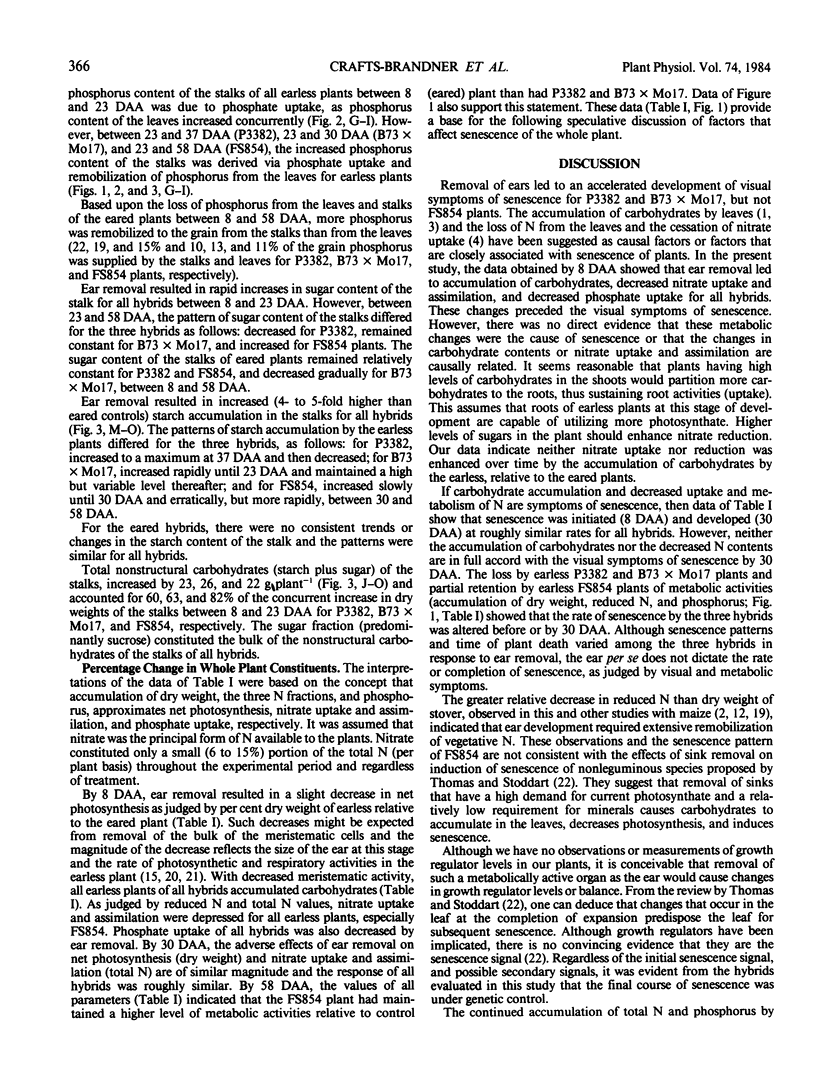
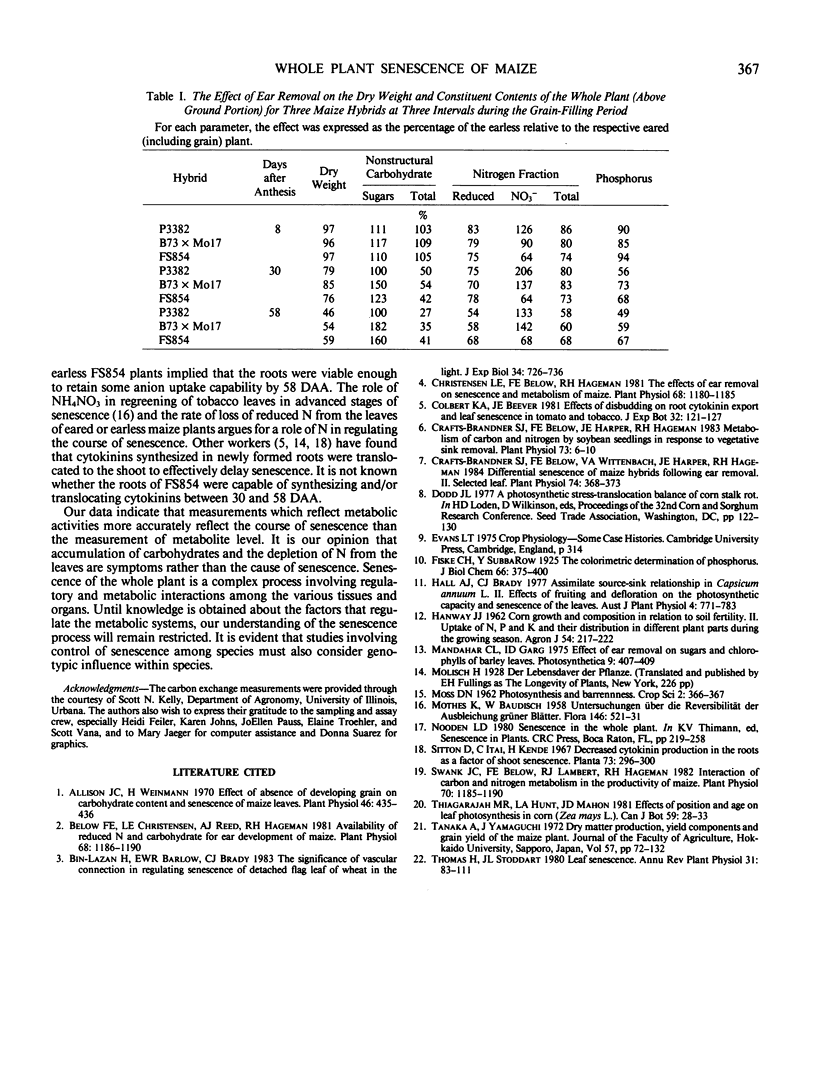
Selected References
These references are in PubMed. This may not be the complete list of references from this article.
- Allison J. C., Weinmann H. Effect of absence of developing grain on carbohydrate content and senescence of maize leaves. Plant Physiol. 1970 Sep;46(3):435–436. doi: 10.1104/pp.46.3.435. [DOI] [PMC free article] [PubMed] [Google Scholar]
- Below F. E., Christensen L. E., Reed A. J., Hageman R. H. Availability of reduced N and carbohydrates for ear development of maize. Plant Physiol. 1981 Nov;68(5):1186–1190. doi: 10.1104/pp.68.5.1186. [DOI] [PMC free article] [PubMed] [Google Scholar]
- Christensen L. E., Below F. E., Hageman R. H. The effects of ear removal on senescence and metabolism of maize. Plant Physiol. 1981 Nov;68(5):1180–1185. doi: 10.1104/pp.68.5.1180. [DOI] [PMC free article] [PubMed] [Google Scholar]
- Crafts-Brandner S. J., Below F. E., Harper J. E., Hageman R. H. Metabolism of carbon and nitrogen by soybean seedlings in response to vegetative apex removal. Plant Physiol. 1983 Sep;73(1):6–10. doi: 10.1104/pp.73.1.6. [DOI] [PMC free article] [PubMed] [Google Scholar]
- Crafts-Brandner S. J., Below F. E., Wittenbach V. A., Harper J. E., Hageman R. H. Differential Senescence of Maize Hybrids following Ear Removal : II. Selected Leaf. Plant Physiol. 1984 Feb;74(2):368–373. doi: 10.1104/pp.74.2.368. [DOI] [PMC free article] [PubMed] [Google Scholar]
- Swank J. C., Below F. E., Lambert R. J., Hageman R. H. Interaction of carbon and nitrogen metabolism in the productivity of maize. Plant Physiol. 1982 Oct;70(4):1185–1190. doi: 10.1104/pp.70.4.1185. [DOI] [PMC free article] [PubMed] [Google Scholar]


